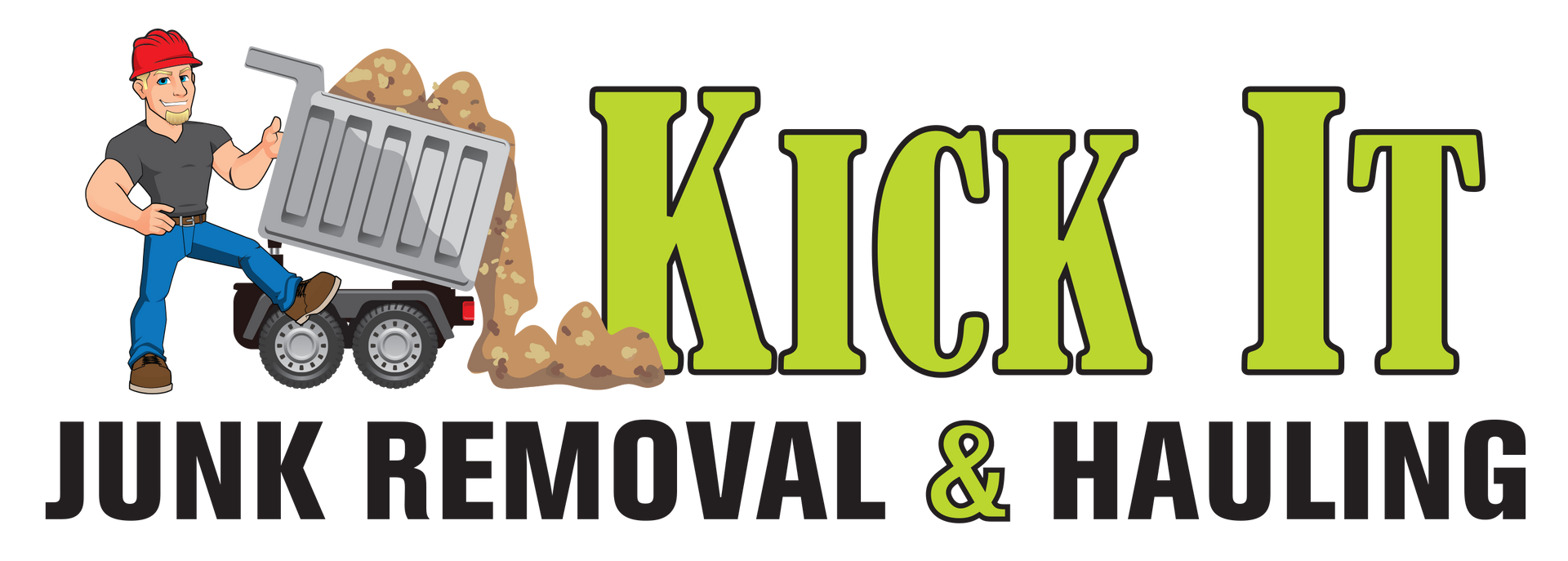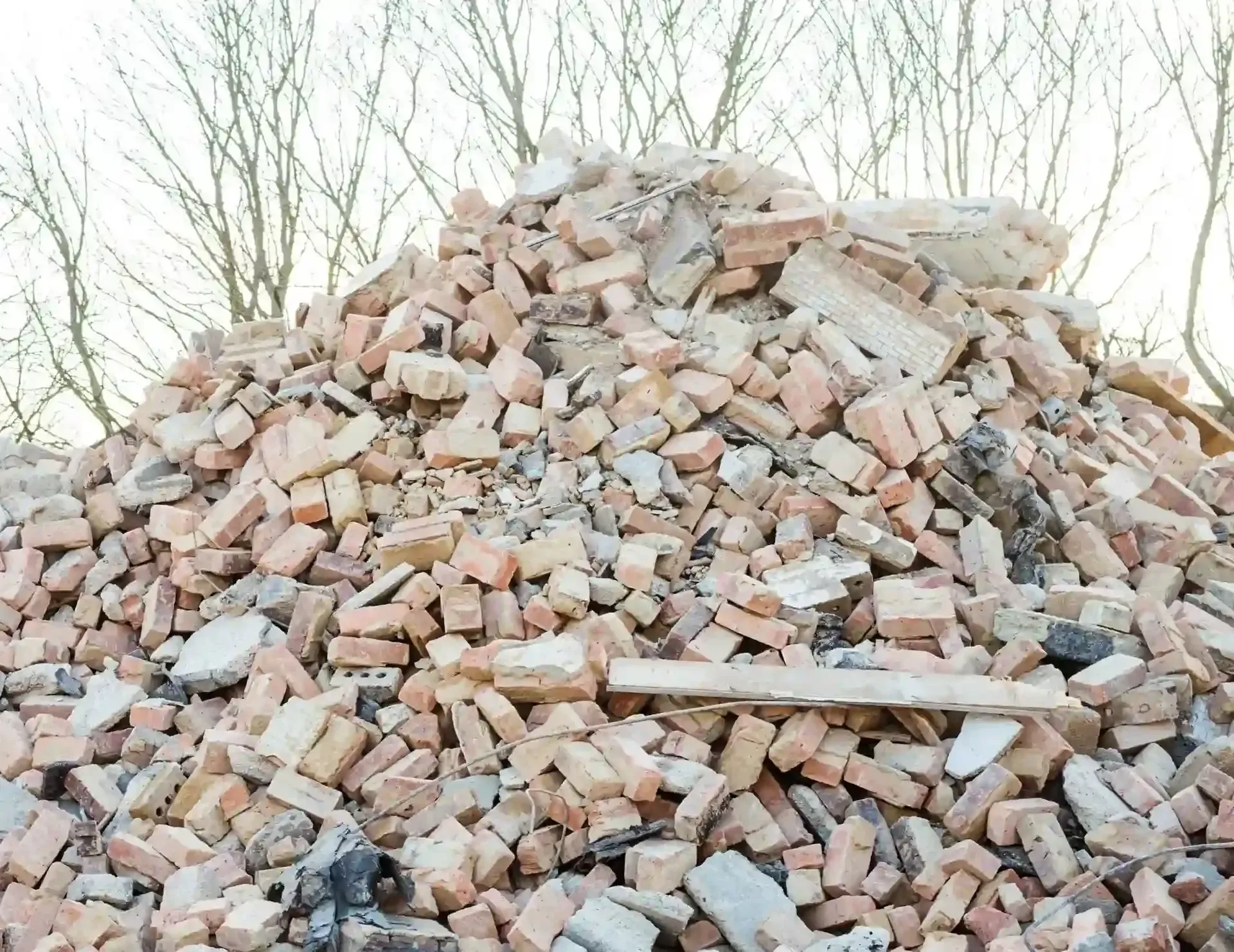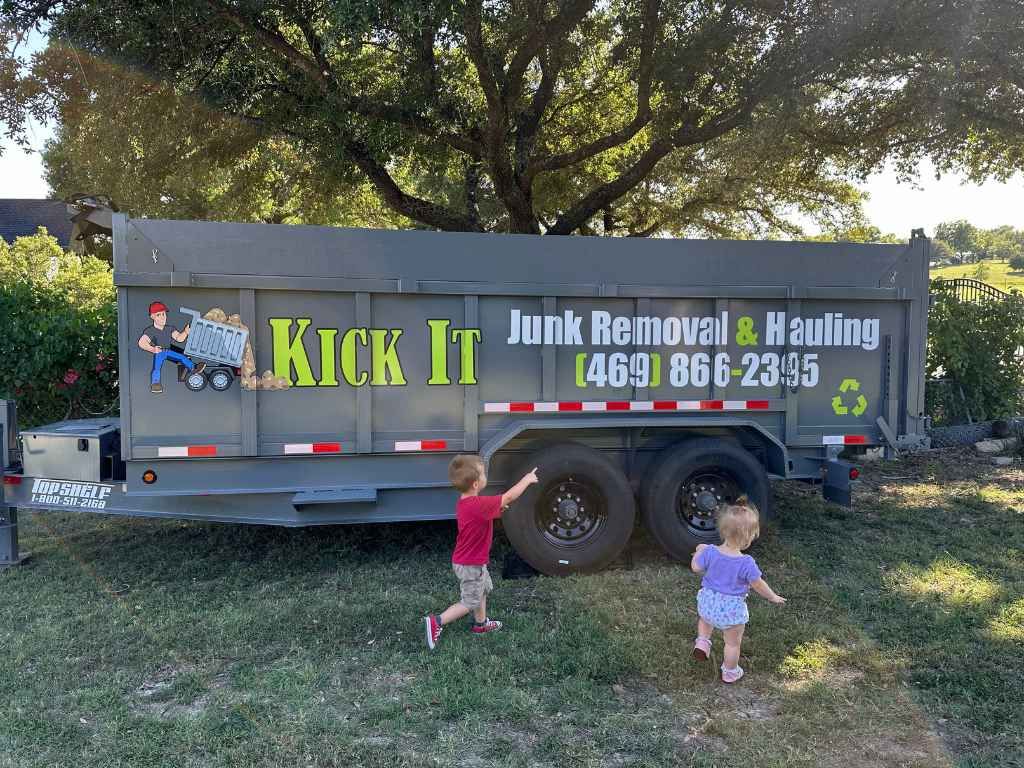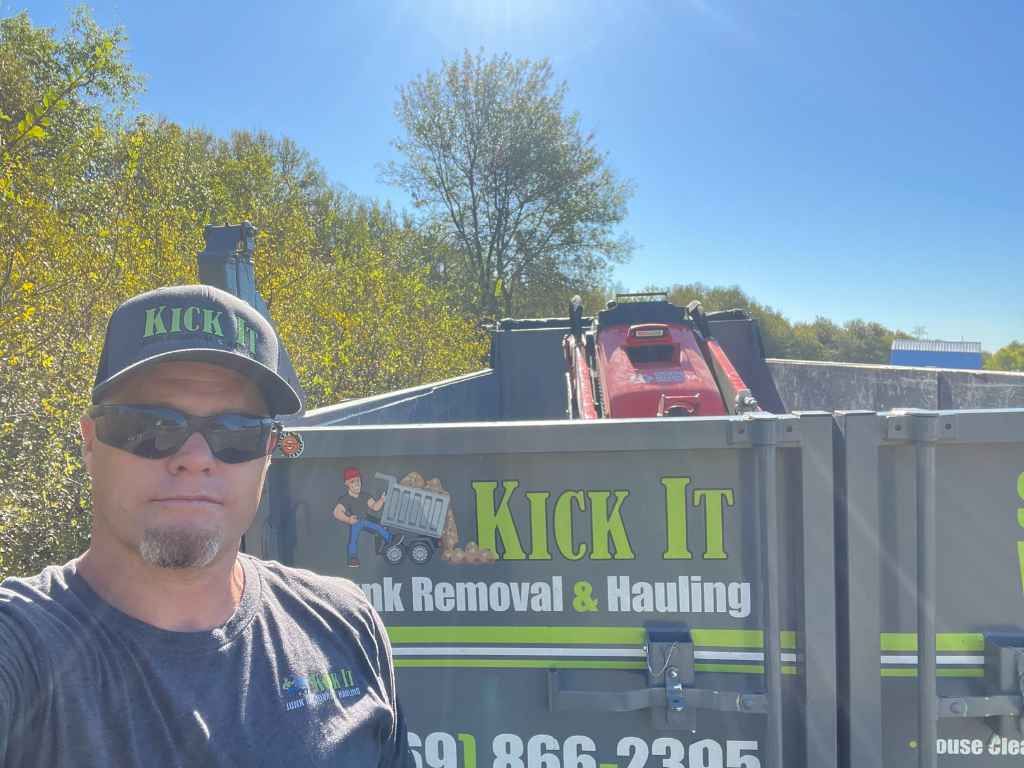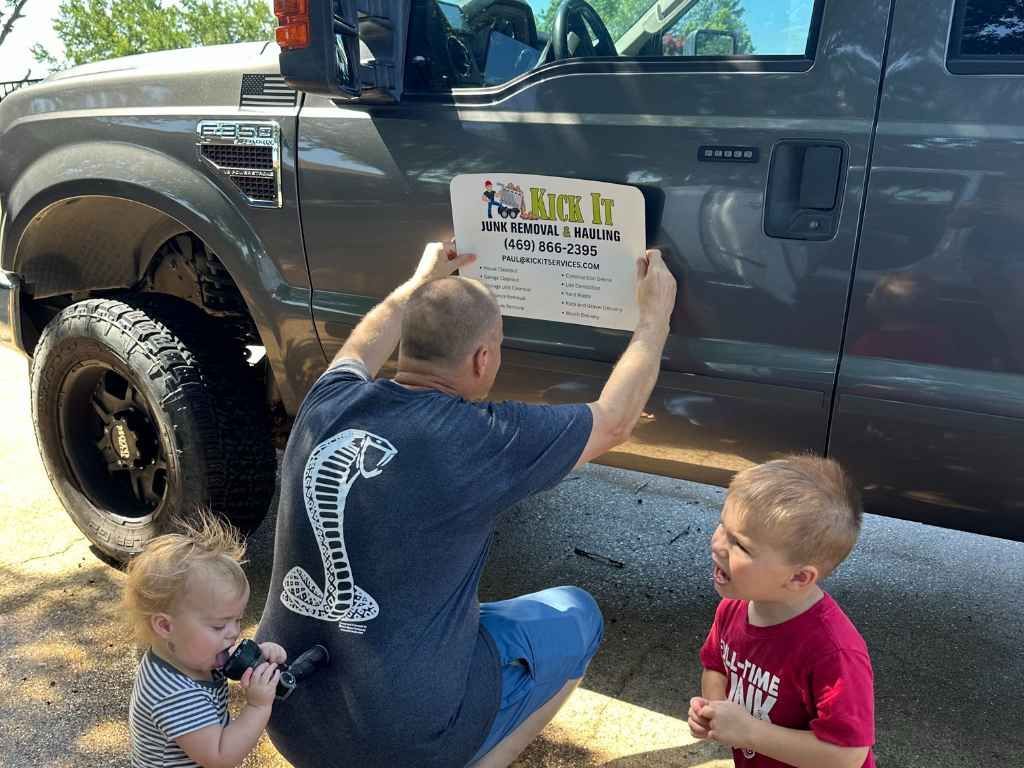How to Safely Handle Drywall Removal and Disposal
Drywall removal might seem straightforward, but doing it right takes more than just swinging a hammer. If you're updating a space or handling damage repair, it's important to know how to tear down drywall without causing more problems—or risking your safety. At Kick It Junk Removal, we've handled countless drywall removals across homes and job sites, and we know how messy it can get if you're not prepared.
From protecting your space and wearing the right gear to disposing of the materials properly, every step matters. Whether you're a DIYer or a contractor, understanding safe and responsible drywall removal makes the process smoother and keeps things up to code. Let’s break it down the right way—clean, safe, and stress-free.
Tips for Safely Removing and Disposing of Drywall
When it comes to drywall removal, safety should always come first. The process can be messy and involves sharp edges, dust, and debris that can be hazardous. Start by wearing proper protective gear, including gloves, goggles, and a dust mask to shield yourself from flying debris and inhaling harmful particles. Clear the area of any furniture and cover the floors with a drop cloth to prevent damage. Using the right tools, such as a utility knife and drywall saw, will help make the process more efficient and minimize risk.
Proper disposal is equally important to ensure you're not adding to landfill waste. Drywall should not be tossed in regular trash, as it can release harmful chemicals when decomposing. Instead, check with local recycling centers or junk removal services that specialize in responsible disposal. Proper handling of both the removal and disposal process can save you time, money, and potential hazards.
A Step-By-Step Guide to Drywall Removal and Disposal
Removing drywall is a straightforward process, but the key to success is taking it step by step. First, identify the area of drywall that needs to be removed and use a utility knife to score along the edges. Then, carefully remove any nails or screws that are holding the drywall in place. If the drywall is large or heavy, consider cutting it into manageable sections to make removal easier. Once it's off the wall, be mindful of electrical wiring and plumbing behind the drywall to avoid accidental damage.
When it comes to disposal, make sure you're following local regulations. Some regions allow drywall to be disposed of with
construction debris, while others require separate disposal due to the material's environmental impact. It's best to contact a local waste management facility or junk removal company to ensure proper handling and recycling of your materials. Following these steps will help you complete your drywall removal project efficiently and responsibly.

Essential Safety Tips for Drywall Removal Projects
Drywall removal can be a physically demanding task, but with the right safety precautions, you can minimize the risk of injury. Start by inspecting the area for any electrical wiring or plumbing that could be hidden behind the drywall. Turn off power to any electrical circuits before cutting into the wall. Always wear protective goggles, gloves, and a mask to prevent exposure to dust, which can irritate your eyes, lungs, and skin. If the drywall contains lead paint, extra precautions should be taken, as removing it can release harmful dust particles.
Proper disposal of the drywall is essential for both environmental and safety reasons. Avoid tossing it in regular garbage, as drywall contains materials like gypsum, which can release hazardous chemicals in landfills. Check with a local recycling center or junk removal service for guidelines on how to dispose of drywall properly. By following safety tips throughout the removal and disposal process, you'll protect both yourself and the environment.
How to Handle Drywall Removal and Disposal with Ease
Handling drywall removal doesn’t have to be complicated. Begin by gathering the right tools and safety equipment before starting the project. You'll need a utility knife, screwdriver, hammer, and a dust mask, along with gloves and goggles to protect yourself. Cut the drywall into manageable pieces using the utility knife, then remove any nails or screws that are holding it in place. If the drywall is particularly large or heavy, it’s a good idea to work with a partner to ensure safety and efficiency during removal.
Once the drywall is removed, disposal becomes the next challenge. Avoid simply throwing the drywall in the trash, as it can be harmful to the environment. Many areas have specific recycling programs for construction debris like drywall. Hiring a junk removal service can take the hassle out of disposal, as they know where to properly dispose of materials and can handle the heavy lifting. With the right preparation, drywall removal and disposal can be a straightforward task.
Proper Techniques for Removing and Disposing of Drywall
Removing drywall correctly involves more than just tearing it off the wall. First, start by using a utility knife to score the edges where the drywall meets the studs. This helps to create a clean break and avoids damaging the surrounding area. Next, use a hammer or pry bar to gently remove the drywall from the studs. It's crucial to work slowly to prevent breaking the drywall into too many small pieces. Once removed, ensure all nails or screws are taken out to prevent injury during disposal.
When it comes to disposal, proper handling is key. Do not throw drywall into general waste bins, as it can contaminate the environment when decomposing. Instead, check with local recycling centers for drywall disposal guidelines or reach out to junk removal services that specialize in construction debris. These professionals can ensure the drywall is recycled or disposed of in a manner that minimizes environmental impact.
The Best Practices for Safe Drywall Removal and Disposal
Drywall removal should always begin with safety in mind. Before starting, inspect the wall for any electrical wiring or plumbing that could be behind the drywall. Turn off the power to the area to avoid accidental electrical shock. Wear appropriate safety gear such as gloves, goggles, and a dust mask to protect yourself from debris and harmful dust particles. Use a utility knife to score the drywall, then remove any nails or screws. If the drywall is large, it’s helpful to cut it into smaller sections to make handling easier.
Disposing of drywall is an important part of the process. Never simply throw it in the trash, as it can release harmful chemicals into the environment. Instead, check with your local waste management services or recycling centers to find out where drywall can be safely disposed of or recycled. A junk removal service can also assist by properly handling and disposing of drywall, making the process easier and environmentally responsible.
Avoid These Common Mistakes in Drywall Removal and Disposal
While drywall removal may seem easy, there are several common mistakes that can make the job harder or more dangerous. One common error is not properly protecting the surrounding area. Dust and debris can scatter, so it’s important to cover the floor and furniture before starting. Another mistake is not checking for electrical wiring or pipes behind the wall. Cutting into these can cause serious damage or even injury, so always turn off power and water to the area before removing the drywall.
When disposing of drywall, many people make the mistake of tossing it in regular trash. Drywall can release harmful chemicals in landfills, so it's essential to dispose of it responsibly. Look for local recycling centers that accept drywall or hire a junk removal service to handle the disposal for you. Avoiding these common mistakes will help ensure your drywall removal project is efficient, safe, and environmentally friendly.
Drywall Removal Made Simple and Safe
Drywall removal doesn’t have to be complicated if you take the right approach. Begin by gathering the necessary tools and safety equipment, such as gloves, goggles, and a dust mask. Score the drywall with a utility knife to create clean edges, then remove any nails or screws holding it in place. If you’re working with large pieces of drywall, consider cutting them into smaller sections to make them easier to handle. Take your time to avoid unnecessary damage to the wall or surrounding areas.
Once the drywall is removed, proper disposal is essential. Drywall should never be thrown in regular trash, as it can harm the environment. Contact local recycling facilities or junk removal companies to ensure safe and responsible disposal. These steps will make your drywall removal project much smoother and safer, leaving you with a clean and safe space.
Expert Advice on Safe Drywall Removal and Disposal
Drywall removal requires careful planning to ensure safety and efficiency. Always wear protective gear, including gloves, goggles, and a dust mask, to avoid injury and dust inhalation. Use a utility knife to score the drywall, remove nails or screws, and cut large sections into smaller pieces for easier handling.
Proper disposal is key—drywall should never go in regular trash. Many areas offer recycling programs for drywall, so check with local facilities. If you're unsure about disposal, a junk removal service can handle it for you. Following these steps ensures you safely and responsibly manage drywall removal and disposal.
Conclusion
Removing drywall doesn’t have to be overwhelming with the right approach and professional help. If you're ready to take on a drywall removal project, ensure it's done safely and efficiently, minimizing mess and environmental impact. Kick It Junk Removal & Hauling is here to help make the process seamless from start to finish.
For hassle-free drywall removal and disposal, contact us today! Call 469-866-2395 or email Paul@kickitservices.com to schedule your service. We're based at 14339 Stanley Lane, Forney, Texas, and ready to assist you with all your junk removal needs. Let us handle the heavy lifting!
